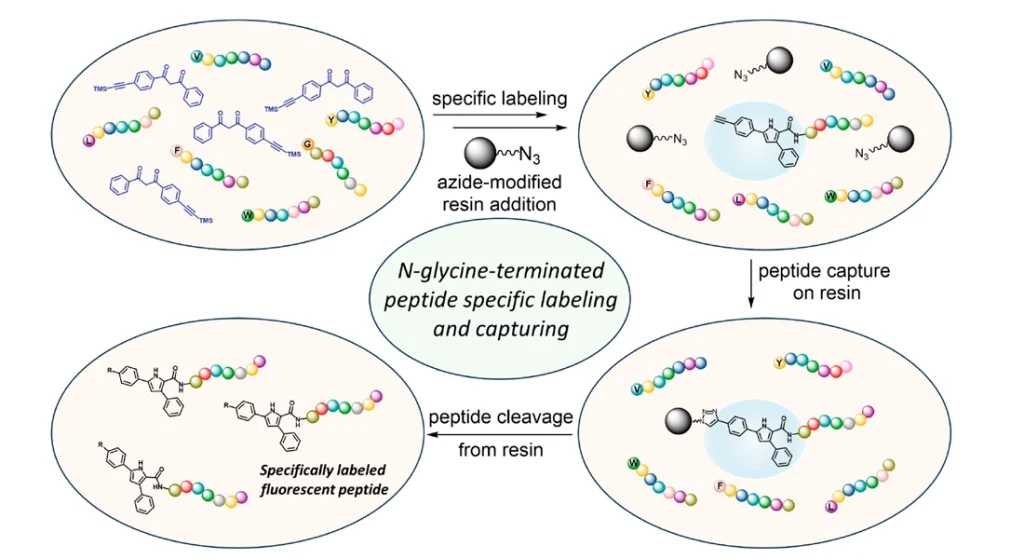Services and Products
如何做得更好
100 级超高无菌洁净室
从实验开始的第一步到包装的最后一步,始终保持在无菌和净化的环境中。
自动检测和调节:自动捕捉和调节灭菌、气压、湿度、温度和灰尘颗粒。
- 双重隔离
- 高效空气过滤器
- 正压空间
- 自动消毒
- 尘埃粒子监测
- 温度和湿度调节
有机和生物双领域技术小组
我们的技术人员来自有机化学和生物学领域,掌握了多种多肽合成方法,包括固相多肽合成法、液相多肽合成法、液固结合多肽合成法、反向固相多肽合成法和微生物发酵法。

质量控制:以自查为核心,推动工作开展。
将以往的经验作为思考要素,并考虑到它不可能对每个生产流程都起决定性作用,坚持在每个流程中反复检测,并以实际数据作为佐证推动下一个流程,这已成为绝对的行为准则,其中包括对环境中的颗粒、湿度、温度、压力、纯度、含量、内毒素、PH 值、生产中的无菌性等进行分析。

生产设施:从多肽合成到冻干,从毫克到公斤
从毫克用于科学研究的定制肽到公斤化妆品肽,我们拥有从合成、纯化、制备、冻干到测试的所有精密设备。

前沿信息
Follow our latest technical achievements and cutting-edge information in the peptide field.
Precision modification of cysteine-containing peptides or proteins using...
Bioorthogonal chemistry, as a versatile method for selective modification of biomolecules under mild physiological conditions, has attracted the attention of the scientific...
Efficient Peptide Synthesis Technology Based on Dynamic Covalent...
Background and Challenges Since the first peptide gly-gly was synthesized in 1901, peptide synthesis has undergone more than 100 years of development,...
Selective modification and synchronized fluorescent labeling of N-terminal...
Peptides are important participants in life activities, and their specific modification and labeling are essential for studying their structure and function. Over...
Contact and Assistance
请向我们咨询肽领域的任何问题。



